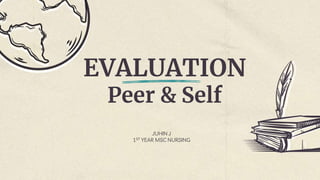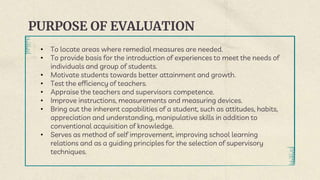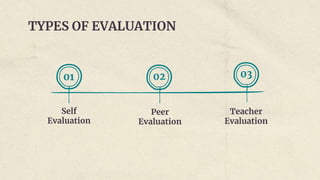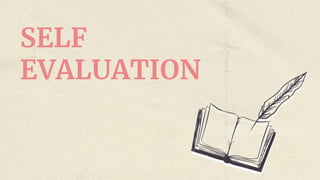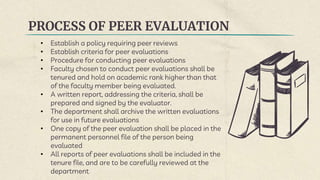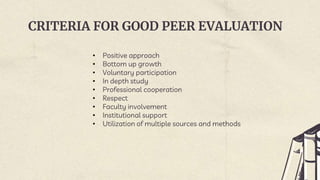This document discusses evaluation in nursing education. It defines evaluation as determining the extent to which educational objectives are being realized. Self-evaluation and peer evaluation are described as important types of evaluation. Self-evaluation involves assessing one's own abilities and progress, while peer evaluation involves colleagues assessing each other's performance. The purposes, principles, characteristics, tools, steps, advantages and disadvantages of self-evaluation and peer evaluation are outlined. Evaluation in nursing education aims to assess students' knowledge, clinical skills, identify weaknesses, and improve teaching effectiveness.
